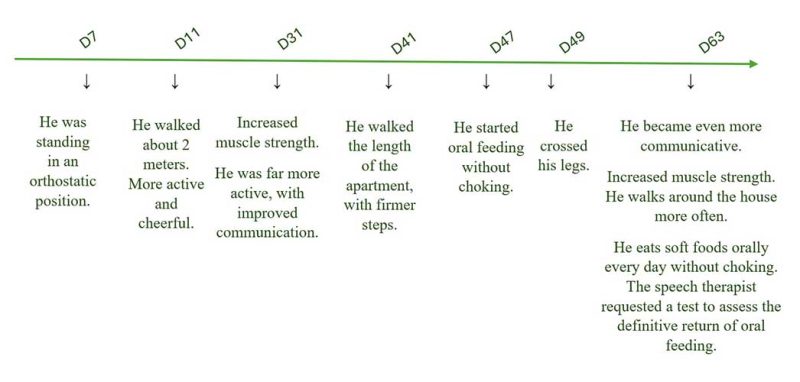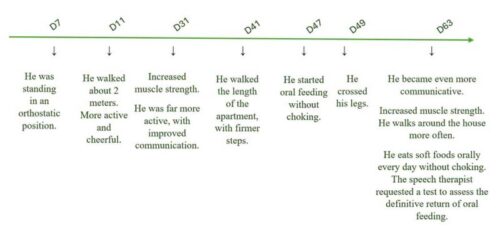Researchers from Brazil have published a detailed study showing significant improvements in a patient living with late-stage Parkinsons Disease after just 63 days of treatment with cannabis oil.
The patient, a 77 year old man, was diagnosed with Parkinson’s Disease 22 years ago. Due to the late stage of his condition, he was unable to speak, had mobility issues, and had problems swallowing food which led to him being fed through a tube. Although he was reported to be lucid, he showed no interest in conversation and tended to become depressed and isolated.
To enable the patient to take part in the study, a responsible family member gave consent as his condition meant he was not to provide it by himself. The patient attended an initial consultation at the Federal University of Paraíba where the research took place, and was followed up by researchers over the following 63 days.
Cannabis treatment was started immediately after the patient’s initial consultation, he was given one drop of cannabis oil containing THC, CBD and other cannabinoids twice daily to begin with. The dose was increased gradually as the study progressed.
The patient’s symptoms visibly improved after the first week, and were shown to increase as the dose was increased throughout the study. By the end of the study, the patient could walk a short distance unaided, and his medical team considered letting him eat without the help of a tube. He was reported to be happier and able to communicate all while reducing his intake of prescription medication without any noticeable impact on his condition.
“After one week of treatment, the patient was able to stand up with the help of the physiotherapist and the nurse. On the 11th day of treatment, he was able to take a few steps, walking with arm support for a distance of about 2 meters,” the report states.
“According to the nurse, he also showed a significant non-motor improvement, becoming more active, cheerful, and attentive to his surroundings. One month after starting cannabis oil, he was even more active, and the physiotherapist noticed an increase in muscle strength and improvement in communication.
“On the 40th day of treatment, the caregiver sent a video showing the patient walking across the entire living room of the apartment where he lives, a spacious area, still with bilateral support but with much steadier steps. On the 46th day, he was able to cross his legs on his own, and the caregiver sent a video in which the patient was able to consume pasty foods orally (yogurt and milk curd) without choking.”

“Two months after starting cannabis oil, the patient is even more active, cheerful, and communicative. The physiotherapist reports a significant increase in muscle strength and notes that he frequently walks around the house. After routine intake of pasty foods without choking episodes, as confirmed by the nutritionist, the speech therapist has requested a videofluoroscopic swallowing study to assess the possibility of resuming oral feeding.”
In their findings, the researchers described cannabis oil’s benefits in the treatment of Parkinson’s Disease as “undeniable”, and called for more research to be conducted so the intricate mechanisms at work can be studied in great detail.
“In this scenario, considering the scarcity of clinical studies and the undeniable benefits of using cannabis oil in Parkinson’s Disease, the results presented in this clinical case highlight the notable improvement in the motor and non-motor symptoms of a 77-year-old man, in an advanced stage of the disease, in order to motivate the performance of randomized controlled clinical trials and provides the basis to make them a validated and recommended therapeutic option.”
It is estimated that around 1 in 37 people alive in the UK today will be diagnosed with Parkinson’s in their lifetime. The condition is more common in older people with current figures showing that prevalence rates almost double every five-year interval between the ages of 50 and 69.
This story first appeared on leafie, view here
Author: Kevin Dinneen


